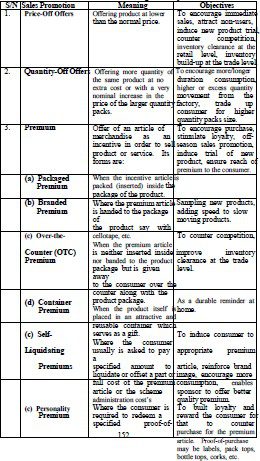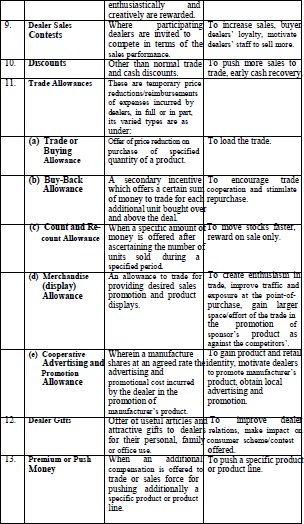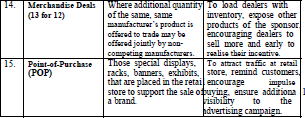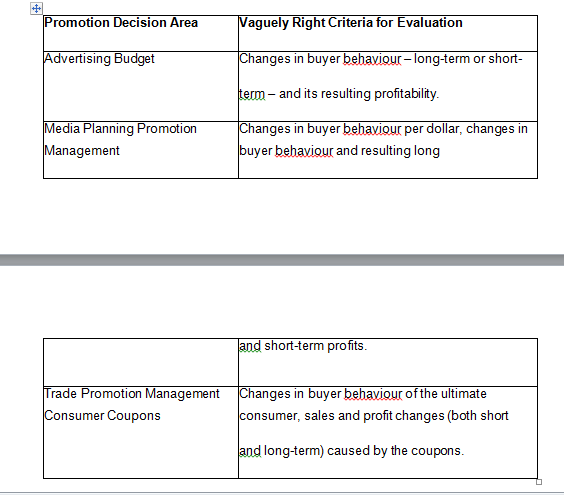As a powerful method of sales promotion with the capability to complement and supplement the advertising function of marketing, sales promotion helps marketers realize a variety of objectives.
These objectives could relate to the promotion of sales in general, or to a specific activity at a particular level, i.e. the consumer, dealer, or sales force. Some of the commonly attempted objectives are to:
- Increase sales (in general, focusing on new uses, increased usage, upgrading units of purchase, winning sales of fading brands, etc.)
- Make the sale of slow-moving products faster
- Stabilize a fluctuating sales pattern
- Identify and attract new customers
- Launch a new product quickly
- Educate customers regarding product improvements
- Reduce the perception of risk associated with the purchase of a product
- Motivate dealers to stock and sell more (including complete product lines)
- Attract dealers to participate in the manufacturer’s dealer display and sales contest
- Obtain more and better shelf space and displays
- Bring more customers to dealer stores
- Make goods move faster through dealers
- Improve manufacturer-dealer relationship
- Motivate sales forces to take the achievement higher than targets
- Attract sales force to give the desired emphasis on new accounts, latent accounts, new products, and difficult territories
- Reward sales forces for active market surveillance and for rendering superior customer services
- Put power into the sales-presentation
- Counter competitors sales promotion and marketing efforts
- Provide punch to the company’s advertising efforts
- Build goodwill.
Companies may use any one or a combination of the above objectives in varying forms to suit the product-market needs of their product. What is of significance is that the sales promotion and marketing objectives are pursued by the company.
Read Also: Role of Advertising and Advertising Management
Sales Promotion Methods
Many methods of sales promotion are used by marketers. Depending upon the creativity level of their sponsors, their variety seems very large. We refer here to some of the most commonly used methods of sales promotion.
As noted above, the accomplishments of the desired promotion and marketing objectives ultimately depend on the extent of the desired response received from consumers, dealers, and members of the sales force.
Hence various sales promotion methods are built around these three target groups. Further, in terms of the impact desired, the variety of sales promotion schemes offered are grouped into two categories: one, aimed at producing immediate impact, and the other delayed impact i.e. carrying on the impact over a period.
Immediate impact schemes are those schemes where the consumer, dealer, or salesperson gets the incentive on first contact, purchase, or on performing a one-time act.
On the other hand, under the delayed impact schemes, the consumer, dealer, or sales force is called upon to comply with the scheme over a period of time before receiving the full benefit of the scheme.
Price discounts and free samples of large quantity packs are popular examples of immediate impact schemes, whereas coupons, trading stamps, and contests are an example of the delayed impact category of sales promotion schemes.
Read Also: The Sales Promotion Method and Why Rapid Growth?
Table 2 presents the variety of sales promotion schemes directed at the consumer, dealer, and sales force levels according to their grouping under immediate impact or delayed impact categories. The meaning and objectives of these schemes are given in Table 3.
Sales Promotion





Though ideal for consumer goods, sales promotion is also used for promoting industrial goods. The difference in the use lies in the types of schemes offered, and in the frequency of their offer.
Sales promotion schemes offered to industrial customers, besides the usual gifts, price-off coupons, and contests, include product demonstration, training to customer staff, an offer of interest-free installment payment plan, ready and regular availability of repairs and spares, and posting of trained staff to assist/supervise in the working of the equipment in the client’s premises, at the manufacturer’s cost.
The sales promotion schemes offered at the level of industrial distributors are the provision of extended credit and the provision of specialized sales/technical staff at the manufacturer’s cost, besides the usual cooperative advertising and sales promotion, gifts, and organization of distributors’ contests.
The sales promotion schemes popularly used to motivate the industrial sales force are prizes and awards for special achievements, sales contests, new accounts contests, and prompt service awards.
Towards a Promotional Strategy
After gaining an understanding of the concepts, issues, and decision areas relating to four methods of promotion – advertising, publicity, personal selling, and sales promotion, let us recall the need for determining the promotion mix (discussed earlier and make a few observations concerning the formulation of a promotional strategy.
You would recall that promotion constitutes one of the important elements of the marketing mix of a firm. Each firm has a need to perform its promotion (marketing communication) function effectively.
Further, each of the four promotion methods has its own unique place in the marketing communications mix of a firm. The question facing marketers, therefore, is not which promotion method to use to meet today’s complex marketing tasks.
Read Also: Steps in the Selling Process in Marketing
Rather, the real question is which promotion method should be emphasized, how intensively it should be used, and how it can be integrated with the other promotional methods.
Decisions on a determination of the promotion mix take us back to the promotion objectives which must emanate from the marketing objectives of the firm. A promotional strategy aims at accomplishing the promotion objectives in the allocated funds and within a scheduled period of time.
Promotional objectives, generally speaking, relate to sales and the marketing communication tasks required to be performed as per the needs of the product market scenario.
Expressed in specific measurable terms, these can be put as increasing sales, improving market share, creating product awareness and comprehension, developing a positive attitude of the public towards the product, building a favorable image of the product, or gaining a competitive advantage.
In this contest, Leonard M. Lodish suggests ‘vaguely right’ criteria, the relevant part of which is as follows:

The extent of emphasis to be placed on the different promotion methods is determined by several variables. First, it is dependent on the promotional objectives, and next, on the characteristics of the target public, their psychology, and the allocated funds.
For example, a marketer of consumer durables in a metropolitan city like Lagos may use different means like advertising to create awareness and build comprehension. It would also require publicity which could be through a press release on the contested technology backing his product.
Sales promotion through demonstration, P.O.P., and offer of introductory price to encourage intentions would also be used and, definitely, personal selling to overcome objections, offer conviction, and precipitate purchase action would complete the promotion picture.
Further, as revealed by Kenouth G. Nardy, for achieving the objectives of, for example, loading the consumer with larger supplies, it can see that it is required that all the methods of promotion be approached simultaneously in terms of objectives to be achieved.
Attaining synergistic advantage arising out of the use of different promotional methods is the hallmark of an effective promotional strategy.
In conclusion, promotion is an important marketing function of each firm. And rare will be a firm that makes use of only one promotional method.
The commonality in the ultimate goal of all the promotional methods apart, from their limited suitability in influencing only a specific part of the consumer adoption process, calls for the need to use the promotional mix in an integrative manner.
Given the complexities in the management of the promotion function and its vulnerability to failure, it is desired that the function be managed professionally. In this unit, we discussed the nature, role, types, and planning process involved in the personal selling and sales promotion methods as promotional tools.
Read Also: Different Types of Selling Jobs and Defining the Salesperson’s Job
